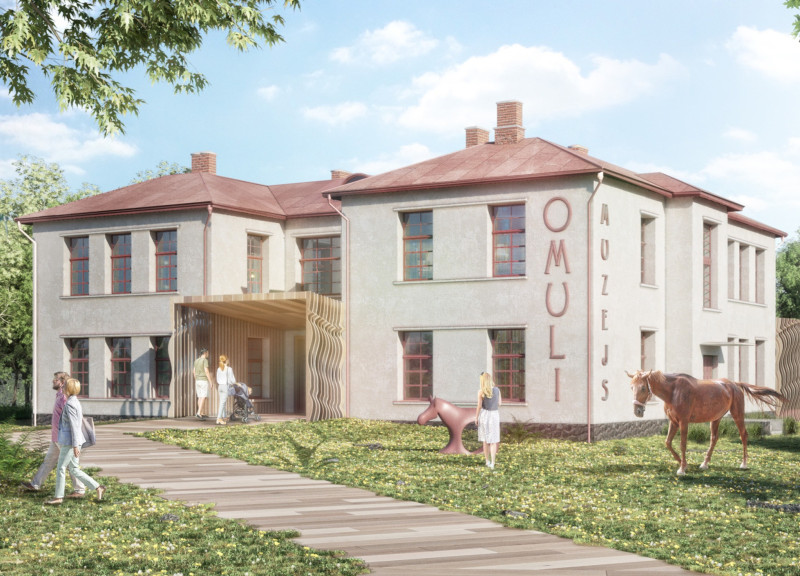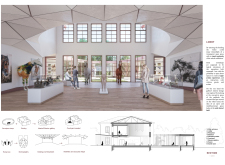5 key facts about this project
The Omuli Horse Museum is located in the North Latvia Biosphere Reserve, an area known for its rich ecology and scenic landscapes. This museum focuses on local horse breeds while serving as a gathering place for community members. The overall design aims to combine art, culture, and environmental awareness, creating spaces where people can connect with both nature and one another.
Design Concept
The main idea behind the museum is to create a "third place," a welcoming environment where visitors can engage with the local equine culture. The layout features an open lobby that invites exploration and interaction. This area serves as the heart of the museum, connecting visitors to various exhibits and outdoor spaces. The design takes cues from traditional horse habitats, using circular and flowing forms to ensure a comfortable atmosphere.
Sustainability Strategies
Sustainability is an important focus of the design. The project emphasizes the use of local and reusable materials to reduce its environmental impact. Elements like insulation and wood panel ceilings play a role in enhancing energy efficiency while maintaining a natural look that fits the surroundings. This approach not only improves the building's performance but also respects the beauty of the landscape.
Functional Spaces
The museum includes a variety of functional spaces tailored for different activities. Areas designated for art workshops and exhibitions are arranged to encourage collaboration and community engagement. The design allows for these spaces to be combined, accommodating larger events or gatherings. This flexibility supports the goal of the museum as a center for creativity and connection.
Future Development
Plans for future development highlight a comprehensive approach to expanding the museum's offerings. Upcoming phases will focus on renovating the West part of the ground floor to better support artist activities. Additionally, plans include creating residential spaces for artists and guest accommodations, enhancing the overall visitor experience.
At the center of the museum lies a peaceful courtyard, designed as a space for visitors to relax and reflect. This area invites contemplation and appreciation of the relationship between nature and art, allowing individuals to connect with their surroundings in a meaningful way.





















































